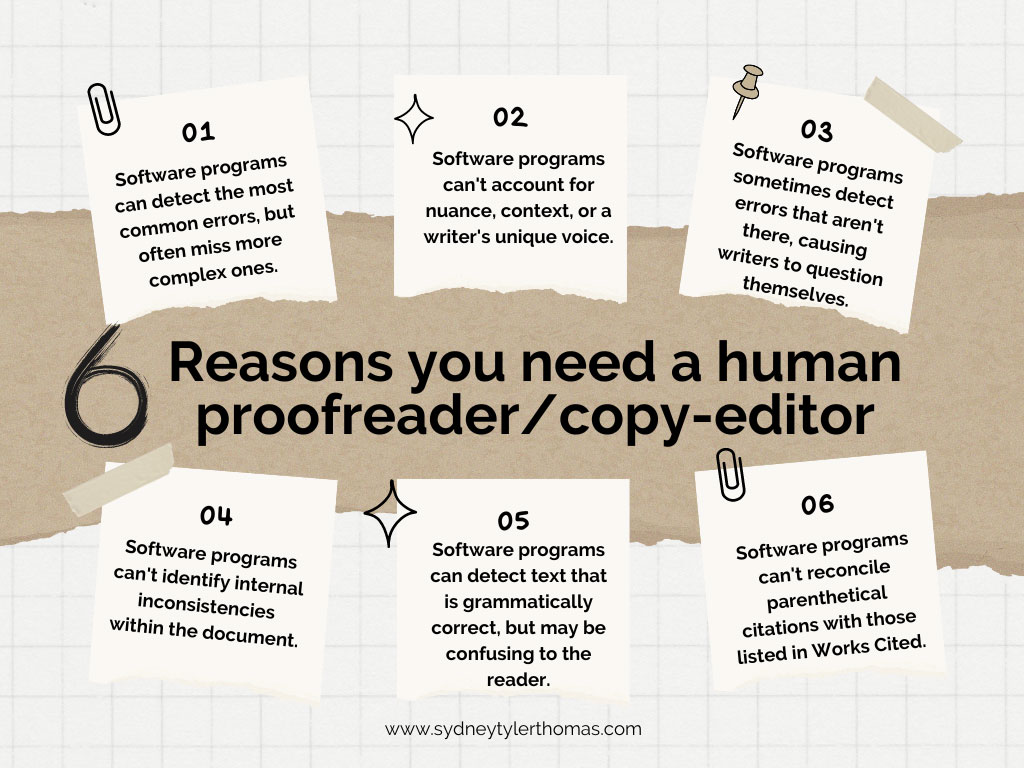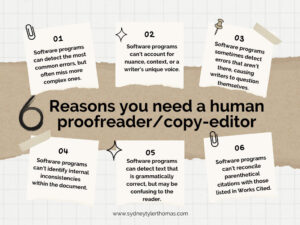The recent explosion of AI has revolutionized the way many people do business. Ethical issues notwithstanding, the technology is increasing productivity and efficiency in many ways, particularly for students, writers, and content creators. Yet, the ease and speed of using AI have seduced many into thinking that it’s a quick and fool-proof way to generate quality content quickly and in finished form.
If you’re using AI to write a thesis, dissertation, manuscript, or other forms of online or print materials, and then using Grammarly or a similar grammar checker to review your work, you may think that AI eliminates the need for a human proofreader. You may be surprised to learn that there are several reasons why software programs are not a replacement for a human proofreader.
Software programs can detect the most common grammatical and punctuation errors, they often miss more complex ones. For example, most grammar checkers won’t automatically capitalize proper nouns, such as people, places, organizations, or books.
Software programs can’t account for nuance, context, or a writer’s unique voice. Cultural differences, colloquialisms, and even technical or discipline-specific references are often missed.
Software programs sometimes detect errors that aren’t there. This can be confusing and frustrating for writers, causing them to question themselves needlessly.
Software programs can’t identify internal inconsistencies within the document. For example, if you reference 50 states in the first chapter and inadvertently type “59” states later in the text, the typo will not be recognized as an error.
Software programs can detect text that is grammatically correct but will not be able to offer suggestions to improve clarity for the reader. A sentence that is grammatically correct but that is confusing to or misleading for the user defeats its purpose.
Software programs recognize common words but can’t identify incorrect usage. For example, “a bird can fly” is correct, however, “a bird can swim” is not.
Software programs can’t identify or account for the intended audience. As a result, they can’t adjust for tone, style, or comprehension level.
Academic proofreading is arguably one of the most important forms of proofreading that simply cannot be replaced by technology. While software programs can identify some typos in academic citations, they cannot reconcile parenthetical in-text citations with those listed in the References or Works Cited section. It is imperative that all sources cited in the text of a thesis or dissertation also be included in the References/Works Cited list and vice versa.
Properly proofread documents help the writer make a good impression, show a commitment to quality, avoid confusion and/or embarrassment, and project a competent image.
Words matter. Make them count.
Learn more at www.sydneytylerthomas.com/proofing









